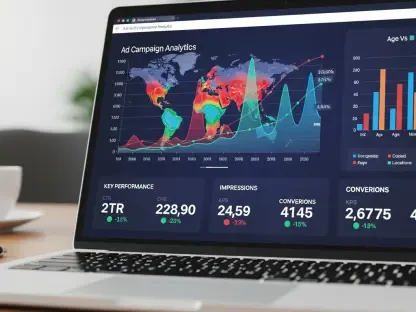Dive into the world of digital marketing with Anastasia Braitsik, a global leader in SEO, content marketing, and data analytics. With her finger on the pulse of the latest trends and tools, Anastasia brings unparalleled expertise to the table. In this engaging conversation, we explore Google Ads’ innovative “Investment Strategy” feature, unpacking how it reshapes budget planning for advertisers. From its impact on decision-making to its role in Google’s broader push toward automated solutions, Anastasia offers deep insights into how this tool can transform campaign strategies, the potential challenges it poses, and what it means for the future of paid media.
Can you walk us through what Google Ads’ new “Investment Strategy” feature is and how it works for budget-limited campaigns?
Absolutely. Google Ads’ “Investment Strategy” feature is designed to help advertisers optimize campaigns that are constrained by budget limitations. When Google detects that a campaign is budget-limited—meaning it’s not reaching its full potential due to insufficient daily spend—a new section pops up in the interface with a prompt like, “Grow your account by creating your own Google investment strategy.” Clicking on “Create investment strategy” allows advertisers to simulate what could happen if they increase their budget. They can see projections for gains in conversions, value, or clicks, which gives a clearer picture of potential outcomes without committing to the spend right away.
What do you think motivated Google to roll out this feature specifically for campaigns with limited budgets?
I believe Google introduced this feature to address a common pain point for advertisers—hitting a ceiling on performance due to budget constraints. Many advertisers set conservative daily caps to manage costs, but this often means missing out on valuable impressions or clicks. This tool pushes them to rethink those caps by showing tangible benefits of increased investment. It’s also a clever way for Google to encourage higher ad spend, as it positions the platform as a partner in growth, nudging advertisers to see the value in scaling up through data-driven insights.
How do you see this feature influencing the way advertisers make decisions about their budgets?
This feature can be a game-changer for decision-making. By offering simulations of potential budget increases, it gives advertisers a concrete way to visualize outcomes before making changes. They can preview metrics like additional conversions or clicks, which helps in strategic planning and aligning campaigns with business goals. More importantly, these projections can be used to build a case for budget adjustments when presenting to stakeholders, making it easier to justify spend with solid ROI forecasts directly from Google’s data.
In terms of predicting campaign performance, how does this feature stack up against older methods advertisers might have used?
Before this feature, advertisers often relied on manual calculations or third-party tools to predict how budget changes might impact performance. This could involve exporting data, running analyses in spreadsheets, or using external platforms for modeling. Having this capability built directly into Google Ads simplifies the process significantly. It reduces the time and effort needed for forecasting and provides insights based on Google’s own data, which is often more accurate than external estimates. It’s a step toward making performance prediction more accessible and integrated.
What broader trends in Google’s approach to advertising does this feature reflect?
This feature fits into Google’s ongoing trend of promoting automated and growth-focused tools. Over the past few years, we’ve seen a shift toward solutions like Smart Bidding and responsive search ads that prioritize efficiency and scalability. With the “Investment Strategy” tool, Google is positioning itself as more than just a platform for running ads—it’s becoming a predictive partner that helps advertisers plan and grow. It’s about fostering a mindset of continuous investment and optimization, aligning with their goal of driving more revenue through smarter, data-driven tools.
What are some potential challenges or pitfalls advertisers might encounter when using this feature for budget planning?
While the feature is promising, there are definitely some challenges to consider. One concern is over-reliance on Google’s simulations. These projections are based on historical data and assumptions, which might not always account for external factors like market shifts or seasonality. There’s also a risk for smaller businesses or those with tight budgets feeling pressured to increase spend beyond what’s sustainable. The tool is designed to encourage growth, but without careful analysis, advertisers might stretch their budgets too thin, hoping for results that aren’t guaranteed.
Looking ahead, what’s your forecast for the evolution of tools like this in the paid media space?
I think we’re just scratching the surface with tools like the “Investment Strategy” feature. As machine learning and AI continue to advance, I expect paid media platforms to offer even more sophisticated predictive tools that not only model budget impacts but also suggest real-time adjustments across multiple variables like audience targeting or creative elements. Google and other platforms will likely double down on automation, aiming to make campaign management almost entirely data-driven. The future will be about balancing these powerful tools with human oversight to ensure they align with unique business goals and constraints.









